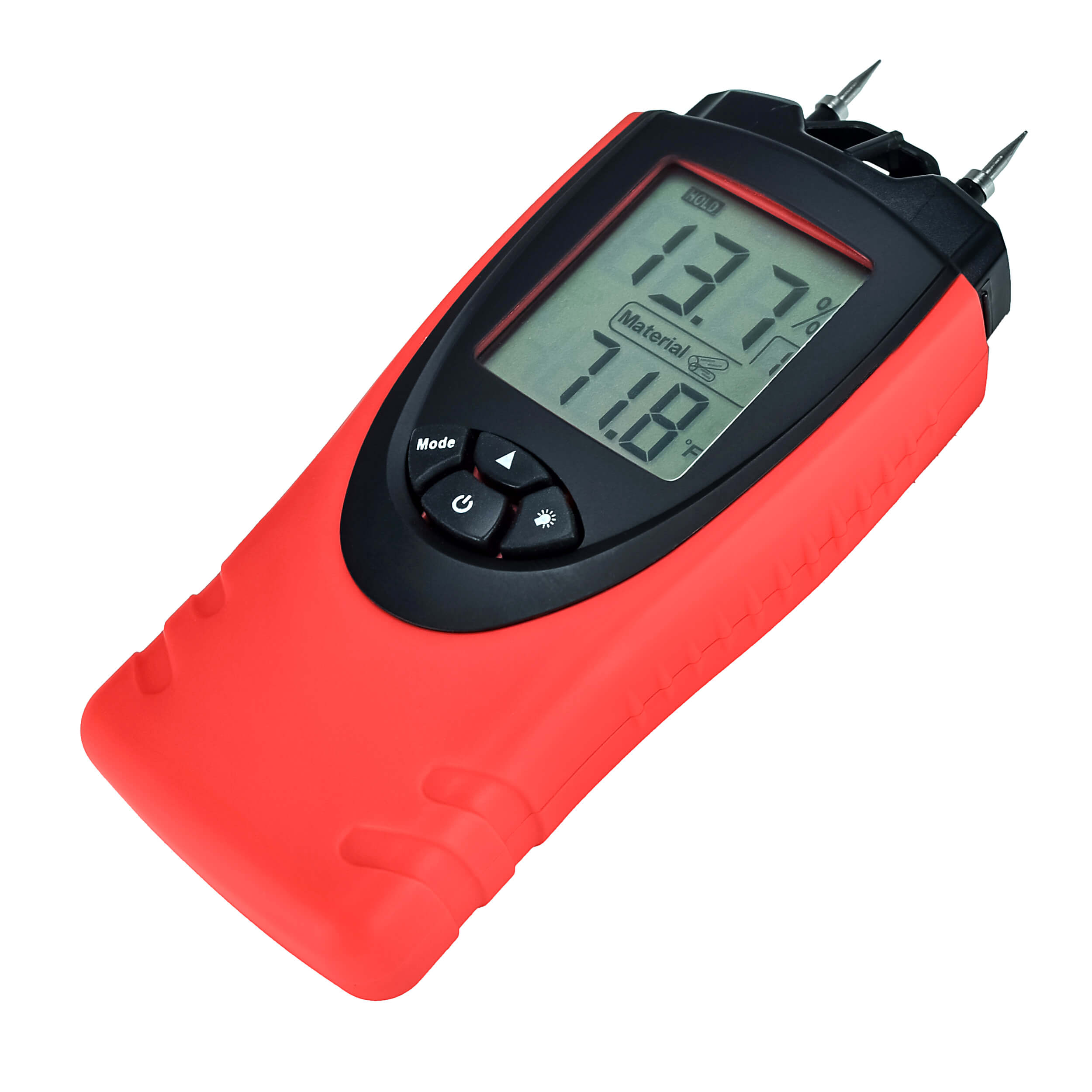Exactly How a Moisture Meter Can Assist You Preserve Optimal Conditions in Your Home or Office
Exactly How a Moisture Meter Can Assist You Preserve Optimal Conditions in Your Home or Office
Blog Article
Delve Into the Globe of Moisture Meters: Whatever You Need to Know
In the realm of moisture meters exists a world of accuracy and functionality that typically goes unnoticed. These tools, while relatively straightforward, hold a wide range of info that can substantially impact numerous markets and applications. Understanding just how moisture meters operate, the various types readily available, and their diverse usages can drop light on their significance in guaranteeing top quality and effectiveness. By discovering the ins and outs of moisture meters, one can discover a valuable device that transcends simple measurement, using insights that can make a considerable distinction in numerous areas.
How Moisture Meters Work
Moisture meters operate by determining the electric conductivity or capacitance of materials to identify the dampness web content present. These meters are very useful tools across different sectors, consisting of woodworking, farming, and construction. By using different techniques such as pinless or pin-type modern technology, wetness meters give exact analyses that assist experts make notified choices.
Pin-type dampness meters function by putting the sharp pins right into the product being examined. The electric conductivity in between the pins is after that determined, with greater wetness levels causing boosted conductivity. Moisture Meter. On the various other hand, pinless wetness meters utilize electromagnetic signals to scan a larger area without creating any kind of damages to the product's surface. These meters are optimal for swiftly examining wetness levels in large locations or ended up items.
No matter the method utilized, wetness meters play an essential duty in avoiding problems such as mold and mildew growth, structural damage, or item issues created by excess moisture. Understanding just how these meters job is vital for guaranteeing the quality and stability of materials in numerous applications.
Kinds Of Moisture Meters
Offered the important function moisture meters play in different industries, it is crucial to comprehend the various types readily available to experts for accurately examining moisture degrees - Moisture Meter. There are primarily 2 major kinds of dampness meters: pin-type and pinless dampness meters

On the various other hand, pinless wetness meters make use of electromagnetic sensing unit plates to check a larger location of the material without triggering any damages. This type appropriates for quickly scanning big locations and is typically made use of for flooring, wall surfaces, and ceilings. Pinless meters are convenient for taking analyses on completed surfaces without leaving any kind of visible marks.
Both types of dampness meters have their advantages and are chosen based upon the specific demands Visit Your URL of the work at hand. Comprehending the distinctions between these types is critical for professionals to make precise wetness evaluations.
Applications Throughout Industries
Building and construction professionals count on dampness meters to evaluate the dampness levels in structure materials like concrete, drywall, and wood, which is important for preserving architectural integrity and protecting against problems like rot or mold and mildew. The flooring market makes use of wetness meters to gauge the moisture material in subfloors before mounting different flooring treatments, avoiding pricey damages due to excess wetness. In the food sector, moisture meters are utilized to check and manage moisture degrees in products such as grains, nuts, and dried fruits to keep quality and quality.
Tips for Utilizing Dampness Meters
Use the moisture meter's calibration settings to make sure exact analyses when gauging the wetness material in different materials. Furthermore, make sure the meter is set to the appropriate moisture range for the product you are gauging to get the most exact results.
When using a pin-type moisture meter, insert the pins to the ideal deepness suggested for the material being tested. This ensures that the dampness analyses are drawn from the appropriate depth within the product, supplying a much more exact depiction of its wetness content. For pinless moisture meters, bear in mind to preserve appropriate contact with the product's surface area to get trustworthy readings.
Routinely examine and replace the batteries in your dampness meter helpful hints to stop incorrect analyses due to reduced power. When not in usage to prolong its life expectancy and keep its accuracy, Shop the meter in a dry and secure place. By complying with these tips, you can make best use of the performance of your wetness meter and get precise wetness web content measurements across various materials.
Maintenance and Calibration
To ensure the accuracy of moisture content dimensions, normal upkeep and calibration of the dampness meter are crucial actions in its correct performance. Calibration that site changes the wetness meter to guarantee that it offers reputable and constant results.
Calibration should be performed occasionally, specifically if the wetness meter is utilized frequently or in crucial applications where precise dimensions are needed. Numerous moisture meters feature calibration devices or can be calibrated by professional solutions. Moisture Meter. It is suggested to keep a log of calibration days and results to track the efficiency of the wetness meter in time. By calibrating the moisture and keeping meter routinely, users can rely on the accuracy of the dampness web content measurements obtained.
Final Thought

In conclusion, dampness meters play an essential duty in various industries by precisely gauging the wetness material of products. Recognizing how these gadgets function, the various types offered, and appropriate upkeep and calibration are important for acquiring reliable results. Whether in farming, manufacturing, or building and construction, the usage of dampness meters aids make certain quality assurance and efficiency in processes.

In conclusion, dampness meters play a crucial duty in different markets by accurately gauging the dampness material of materials.
Report this page